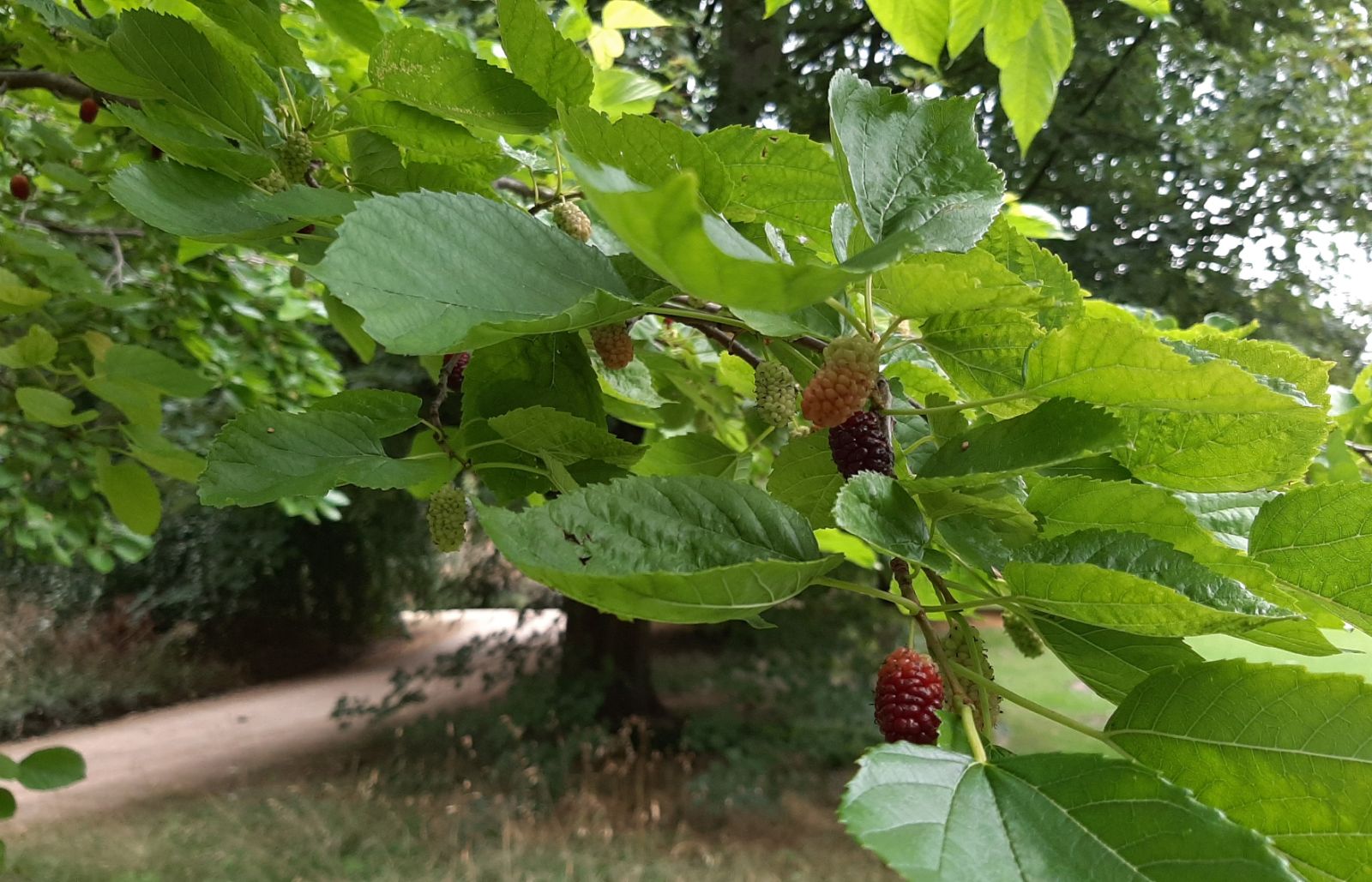Morus alba × rubra
Sponsor
Kindly sponsored by a member of the International Dendrology Society.
Credits
Tom Christian & Peter Coles (2022)
Recommended citation
Christian, T. & Coles, P. (2022), 'Morus alba × rubra' from the website Trees and Shrubs Online (treesandshrubsonline.
Genus
Morus alba probably began to hybridise with indigenous M. rubra soon after its introduction to North America in the 17th century. In the wild, these hybrid forms are considered a threat to the survival of M. rubra (Parks Canada Agency 2011) but several have been selected for their value to horticulture. A representative selection is discussed below.
'Carman'
Synonyms / alternative names
Morus alba 'Carman'
Morus alba 'Carmen'
Raised in Canada by Ernie Grimo of Grimo Nut Nursery, Ontario, ‘Carman’ is a heavy cropping selection with sweet, cream-white fruits; these are produced even when plants are very young (Andrews, Feltwell & Lane 2012; Frank P Matthews 2022). It is presumably a very hardy selection.
'Illinois Everbearing'
A culinary mulberry selected for its hardiness, vigour, a long cropping season lasting several weeks, and for its nearly seedless, very sweet, black fruits (Jacobson 1996; Hatch 2021–2022). This chance hybrid was discovered by Peter Glaser of Evansville, Indiana, in White County, Illinois, in 1947 and commercialised in 1958, but it is now more commonly cultivated in Europe than in the US. It bears a far greater resemblance to M. alba than M. rubra (Andrews, Feltwell & Lane 2012).
'Rupp's Romanian'
A chance seedling produced in the US from a plant (presumably M. alba) imported from Romania in the 1940s. It ultimately forms a large tree, but is slow-growing (Andrews, Feltwell & Lane 2012).


